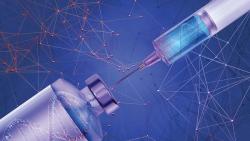
OR WAIT null SECS
- About Us
- Advertise
- Contact Us
- Editorial Info
- Editorial Contacts
- Editorial Advisory Board
- Do Not Sell My Personal Information
- Privacy Policy
- Terms and Conditions
© 2024 MJH Life Sciences™ and Pharmaceutical Technology. All rights reserved.
Market for Packaging Continues to Expand
Interest grows in AI, digitalization, robotics, and sustainability.
The global pharmaceutical packaging market is projected to expand at a compound annual growth rate (CAGR) of 9.7% from 2023 to 2030, according to a study by Grand View Research (1). The growth in pharmaceutical packaging reflects the growth in the sector, due to expanding usage in developing nations and an aging population and reshoring in the United States, the world’s largest market for pharmaceuticals (2).
Analysts predict the strength of the US market will make the pharmaceutical sector one of the strongest performers in 2023–2024, even if a recession occurs, which many economists think is likely to happen especially if the Federal Reserve continues raising interest rates. A weaker economy would yield at least one positive; it would help retain personnel because employees are less likely to change jobs in uncertain times. It won’t, however, help hiring challenges, which are expected to continue for the remainder of the decade. As a result, automation is viewed as a good investment with growing interest in artificial intelligence (AI), digitalization, and robotics (2).
A report published by Connect in Pharma notes, that although not yet widely used, AI is no longer a future concept. Of the companies engaged in adopting AI, almost all recognize the important role digital tools are playing to improve data collection and reduce manufacturing downtime. AI and machine learning support continuous manufacturing practices, a key trend to reduce waste, improve efficiency, and increase line speeds. Digital tools also can reduce human error and improve precision fill/finish, workflow integration, and anticounterfeiting (3).
Furthermore, digital tools enhance the ability to record and share supply chain data with regulators and make it easier to comply with regulations like Annex 1, which sets requirements to minimize the risk of contamination of aseptically filled products. “Automation in fill/finish can help to address some challenges in meeting these requirements, while at the same time providing better efficacy in production,” said Andreas Raabe, CEO of Adragos Pharma, a Munich-based contract development and manufacturing organization. Despite the benefits of digitalization, multiple barriers exist including ensuring data integrity and security, identifying the right software, cost, and a lack of corporate leadership (3).
Usage of robots, which offer precision, efficiency, speed, compatibility with customized packaging, and the potential to minimize human interaction on sterile product lines, is expected to expand dramatically through 2032, according to a report from Global Market Insights. Adopting robots for picking and placing products conserves floor space, simplifies inspection, and supports tracking and tracing functions (4).
Stäubli Tec-Systems, for example, offers validated robotic systems designed to work in aseptic areas and withstand rigorous cleaning. Systems include the Stericlean range for aseptic environments and the new Stericlean+ models for use in isolators. The TX2-60 Stericlean+ robot with a hollow wrist option features an enhanced hygienic design, higher cleanability, a new FDA-compliant surface coating, and dynamic joint seals. Telemanipulation of the robot via joystick minimizes human interventions and offers the potential for a closed system (5).
Poised for growth
Sectors poised for the strongest growth include inhalable biologics, long-acting injectable formulations, and connected devices. Exactly half of the Connect in Pharma survey respondents confirmed that their company is or will be developing, manufacturing, or packaging drugs that are inhaled (3).
“Nasal delivery is becoming increasingly prevalent across a variety of pharmaceutical niches,” said Deborah Smook, vice-president of Marketing & Business Development at TurboFil Packaging Machines, which introduced the Mini-Monoblock MDN-50 system to streamline packaging of multi-dose nasal products. The system fills, seals, and caps nasal spray containers at a rate of up to 50 pieces/min, occupies a compact footprint, and can be integrated with a checkweigher and wraparound labeler (6).
The likelihood of strong growth for inhalable drug delivery devices can be attributed to the potential for fast absorption and the high bioavailability of biologics delivered via the nasal passage or lungs. Dry powder inhalers and nasal delivery devices rank as the most popular primary packages. Interest is particularly strong in developing more sustainable reusable inhalers and inhalation devices for vaccine delivery (3).
Suppliers already are working on more sustainable designs. For example, Aptar Pharma has developed the APF (advanced preservative-free) Futurity metal-free nasal spray pump for nasal saline and other over-the-counter products. When used in combination with a high-density polyethylene (HDPE) or polypropylene container, a product with the APF Futurity pump can be conveniently recycled as one piece when empty, with no need to separate or detach any parts or materials before disposal. The result is a streamlined recycling process and higher quality recyclates. Class AA certification from cyclos-HTP confirms the recyclability of the metal-free nasal spray pump (7).
Hurdles to more widespread adoption of inhalable biologics include patient safety, satisfactory bioavailability, the shorter-acting effects of inhalable drugs, ease of use, and an evolving regulatory environment. The new EU Medical Device Regulation, for example, creates significant regulatory challenges for drug-device combination product manufacturers that will delay the approval and launch process, including increased demands for manufacturers to document their manufacturing flow (3).
New delivery systems for injectables are another growth area. Half of the survey respondents reported that their company is or will be developing,
manufacturing, or packaging injectable formulations (3).
Another projected growth area, connected devices, opens doors to personalized care. Benefits include increased patient adherence and compliance, support for remote monitoring and data collection, improved patient outcomes, and the potential to reduce waste from expensive therapies. Hurdles to adoption of connected devices include who controls the data, how/where the data are shared, and whether devices should be single-use or reusable. Manufacturing costs, cybersecurity, patient hesitancy, and regulations also pose challenges to developers (3).
Sustainability
Faced with growing consumer and regulatory pressure to reduce its environmental impact, the pharmaceutical industry is taking steps to adopt more sustainable manufacturing and packaging practices. Although one-third of Connect in Pharma survey respondents have yet to embark on sustainability improvements, the industry is seeing increasing use of recycled materials in secondary packaging, the implementation of energy-efficient technologies, and the development of more eco-friendly drug delivery systems (3). Interest in compostable materials and polyethylene terephthalate (PET) containers made from renewable, plant-based materials also is growing (1).
In a study conducted by Aptar Pharma in 2022, 77% of respondents indicated that it was “important” or “very important” that the products they buy are recyclable (7). This often is accomplished with monomaterial designs like the Polyfoil MMB 545/645’ tube from Neopac, which is approved as fully compatible with the European rigid HDPE recycling stream. The tube structure replaces the typical ethylene vinyl alcohol barrier layer with a thin film barrier layer, which does not affect recyclability. The tests, performed by the Institut für Kunststofftechnologie und -recycling using the RecyClass Recyclability Evaluation Protocol for HDPE containers, show recycled tube material can be used in high-end or closed-loop applications at levels up to 25% (8).
Another desirable feature, recycled content, supports circularity and is likely to become more important in pharmaceutical packaging if the European Commission’s proposed amendment to its Packaging and Packaging Waste Directive is approved. The amendment would make the directive a full-fledged regulation and set elevated sustainability standards for packaging materials. Although it’s likely the pharmaceutical industry would be granted longer deadlines, this regulatory change would push the industry toward greater use of recycled materials to meet the more stringent sustainability rules (9). Post-consumer recycled content is found in glass containers, as well as some PET containers and secondary packaging (1).
However, increasing recycled content depends on improved collection, better sortation techniques, and greater capacity for end-of-life reprocessing, according to a report published by PMMI, The Association for Packaging and Processing Technologies, and AMERIPEN. Policy changes will be needed to meet these objectives and achieve a circular economy. According to the report, success will depend on the establishment of:
- extended producer responsibility programs
- universal access to recycling and composting services
- standardized definitions to lessen consumer confusion and ensure stakeholders communicate a consistent message
- alternatives to material bans so the optimum packaging option can be chosen for each application
- federal investment into programs focused on more efficient packaging design and waste management
- data collection to measure and benchmark the performance of a circular packaging economy
- a reusables infrastructure (10).
Reusables, particularly for secondary and distribution packaging, look like a promising element of a circular economy. However, infrastructure is lacking, and investment is needed to establish reverse logistics systems, which provide consumers with convenient, safe, and hygienic collection points. Production lines also must be equipped for cleaning and reuse of packaging. The costs to develop and scale an infrastructure for reusables pose a significant hurdle. A wide range of stakeholders will need to develop a collaborative strategy that incentivizes innovation (10).
Despite a strong interest in sustainability, the cost of sustainable materials and practices poses a major barrier. However, some survey respondents believe digitalization across the manufacturing line can support sustainability efforts. Fausto Artico, global R&D tech head and product director of Innovation and Data Science at GSK, explained, “As more processes become automated, it’s easier to make green optimizations. …when you use data science to monitor and log everything happening in systems, you finally have an idea of what the waste is, how much there is, and where it’s happening” (3).
References
- Grand View Research. Pharmaceutical Packaging Market Size & Share Report, 2030, grandviewresearch.com. Market Study (accessed Sept. 28, 2023).
- PMMI, Business Intelligence, a division of PMMI The Association for Packaging and Processing Technologies. Guidance in an Uncertain Economy–Gauging the Risks Going Forward 2023-2024. Market Study. June 2023.
- Easyfairs. Connect in Pharma. The Future of Pharma Production, Manufacturing and Packaging Trend Report. 2023.
- Global Market Insights. Pharmaceutical Robots Market Size, Share and Industry Analysis Report, Regional Outlook, Growth Potential, Competitive Market Share & Forecast, 2023–2032. Market Study. Pharmaceutical Robots Market Growth | Forecast, 2023-2032. gminsights.com (accessed Sept. 28, 2023).
- Stäubli Tec-Systems GmbH Robotics. Robots with a Laser Focus on Pharma. Press Release. Sept. 18, 2023.
- TurboFil Packaging Machines. TurboFil Introduces Inline Filling & Capping Machine for Multi-Dose Nasal Dispensers. Press Release. July 29, 2023.
- Aptar Pharma. Aptar Pharma Launches First Metal-Free Highly Recyclable Nasal Spray Pump, Press Release. Jan. 20, 2023.
- Neopac. Neopac’s ‘Polyfoil® MMB 545/645’ Tube Receives a RecyClass Recyclability Approval. Press Release. Feb. 23, 2023.
- TekniPlex Healthcare. TekniPlex Healthcare to Lecture on Pharma-Grade Recycled Plastics at Pharma Packaging & Labeling Innovation Forum. Press Release. Sept. 7, 2023.
- PMMI, The Association for Packaging and Processing Technologies, and AMERIPEN (the American Institute for Packaging and the Environment). 2023 PACKAGING COMPASS: Evaluating Trends in U.S. Packaging Design over the Next Decade and Implications for the Future of a Circular Packaging System. Report. April 18, 2023.
About the author
Hallie Forcinio is packaging editor for Pharmaceutical Technology®.
Article details
Pharmaceutical Technology®
Vol. 47, Number 11
November 2023
Pages: 22-23, 31
Citation
When referring Forcinio, H. Market for Packaging Continues to Expand. Pharmaceutical Technology 2023 47 (11).

 Download Issue: Pharmaceutical Technology, November 2023
Download Issue: Pharmaceutical Technology, November 2023

